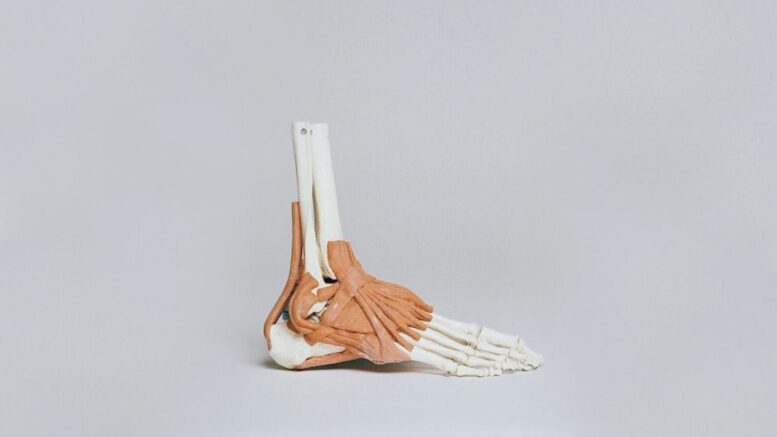Have you ever experienced that sharp, stabbing pain in your heel or foot arch? If so, you’re not alone. Foot pain is a common issue that affects millions of people worldwide, hindering their daily activities and overall quality of life. One of the primary culprits behind this discomfort is Plantar Fasciitis – a condition that often goes unnoticed until it becomes excruciating. In this article, we will shed light on Plantar Fasciitis, its symptoms, diagnosis, and effective treatment options, empowering you to tackle this issue like a pro.
Understanding Plantar Fasciitis
Plantar Fasciitis is the inflammation of the plantar fascia – a thick band of tissue that connects the heel bone to the toes and supports the arch of your foot. This inflammation can result from various factors, including overuse, improper footwear, high-impact activities, and even certain medical conditions. People with flat feet or high arches, as well as those who spend long hours standing or walking, are at a higher risk of developing this condition.
Identifying the Symptoms
Recognizing the symptoms of Plantar Fasciitis is essential for early intervention. Common indicators include sharp pain in the heel or bottom of the foot, especially after periods of inactivity or prolonged standing. The pain may subside during physical activity but can worsen with continued strain. In some cases, individuals may experience a dull ache or stiffness in the foot.
Diagnosing Plantar Fasciitis
If you suspect Plantar Fasciitis, consulting a healthcare professional is crucial for an accurate diagnosis. They will conduct a thorough examination, review your medical history, and perform imaging tests like X-rays or ultrasound to rule out other conditions.
The Impact on Daily Life
Plantar Fasciitis can disrupt your daily life, making simple activities like walking, exercising, or standing for extended periods challenging. As the pain intensifies, it can lead to altered gait and posture, potentially causing secondary issues in other parts of the body.
Treating Plantar Fasciitis: Conservative Methods
Thankfully, most cases of Plantar Fasciitis can be treated with conservative methods. Rest is essential, allowing the inflamed tissue to heal. Applying ice to the affected area can reduce inflammation and pain. Regularly performing stretching exercises, especially before getting out of bed, can alleviate discomfort and improve flexibility. Additionally, wearing compression socks can provide support and help reduce swelling, contributing to faster healing.
Medical Interventions
In some cases, conservative treatments may not be sufficient, and medical interventions may be necessary. Steroid injections can help reduce inflammation and provide relief. Shockwave therapy, which involves delivering shockwaves to the affected area, is another option that stimulates healing.

Physical Therapy and Exercises
Physical therapy plays a vital role in the recovery process. A therapist can design a tailored exercise program to strengthen the foot muscles, increase flexibility, and improve overall foot function. They may use techniques like massage and ultrasound to aid healing and reduce pain.
Preventing Plantar Fasciitis
Prevention is always better than cure. To reduce the risk of developing Plantar Fasciitis, it’s crucial to wear appropriate footwear that provides adequate support. Avoid excessive high-impact activities and gradually increase your activity level to prevent overuse injuries. When engaging in physical activities, consider wearing compression socks to support the arch and reduce strain on the plantar fascia.
Lifestyle Changes for Recovery
Incorporating healthy habits into your lifestyle can contribute to a faster recovery. Maintaining a balanced diet that includes foods rich in anti-inflammatory properties can aid the healing process. Additionally, ensuring sufficient rest and avoiding activities that worsen the pain are essential. Regularly performing foot exercises, as recommended by your healthcare provider, can help prevent recurrence and keep your feet healthy.
Managing Pain at Home
At-home remedies can provide relief from Plantar Fasciitis pain. Applying a warm compress or heating pad to the affected area can help ease discomfort. Over-the-counter pain medications, like ibuprofen, can also alleviate inflammation and pain. However, it’s essential to use these medications as directed and consult your healthcare professional if the pain persists.
When to Seek Professional Help
While most cases of Plantar Fasciitis can be managed at home, certain situations warrant professional attention. If the pain persists or worsens despite conservative treatments, seeking medical advice is crucial to avoid potential complications. Your healthcare provider can recommend further tests or treatments based on your individual condition.
Recovery Timeline
The recovery timeline for Plantar Fasciitis varies from person to person, depending on the severity of the condition and individual factors. In general, most people experience significant improvement within several weeks to a few months with proper care and adherence to treatment. However, it’s essential to be patient and consistent with your treatment plan.
Plantar Fasciitis can be a sneaky culprit behind foot pain, but recognizing its symptoms and taking prompt action can lead to successful recovery. By following conservative treatments, seeking professional help when needed, and adopting healthy lifestyle changes, you can tackle Plantar Fasciitis like a pro, putting an end to foot pain and regaining your mobility.
For additional support during your recovery journey, consider exploring compression socks from BlitzuGear.com. These specially designed socks provide targeted support to the arch, and help reduce swelling, making them a valuable addition to your healing process. Remember, the road to recovery may require patience and perseverance, but with the right approach and resources, you can overcome Plantar Fasciitis and get back to enjoying life to the fullest.
